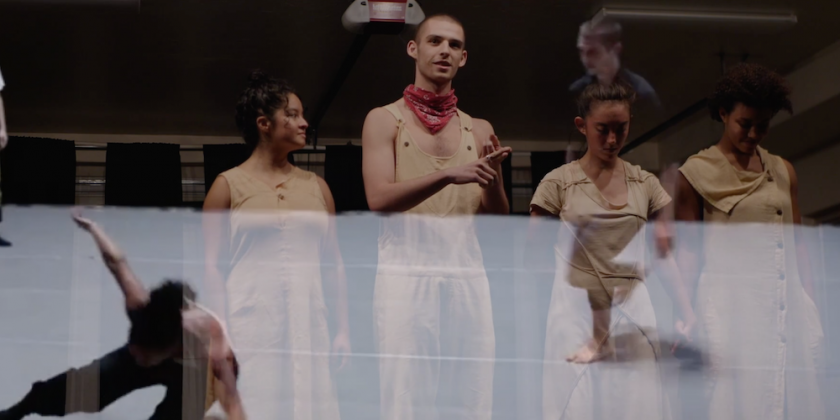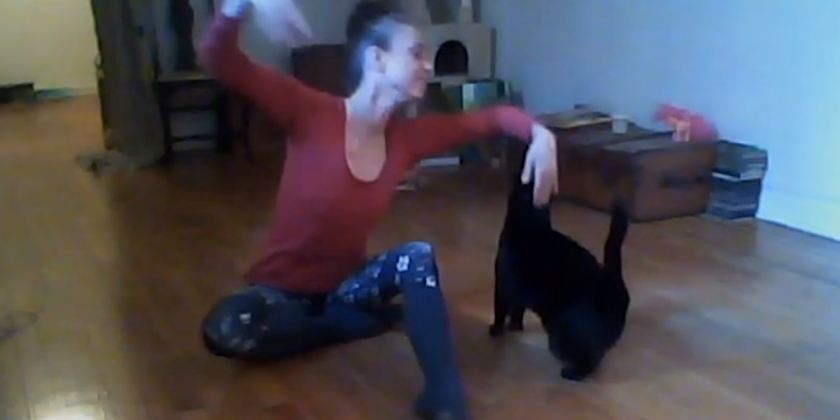Impressions of the Mariinsky Ballet's Tribute to Maya Plisetskaya

Ulyana Lopatkina & Diana Vishneva Lead the Company at BAM
BAM and The Mariinsky present
The Mariinsky at BAM
BAM Howard Gilman Opera House, 30 Lafayette Avenue, Brooklyn, NY
A Tribute to Maya Plisetskaya
February 25 - 27 at 7:30pm, February 28 at 7pm (watched 2/26, 2/27, and 2/28)
Was it the Mariinky's general and artistic director, the conductor Valery Gergiev or his good friend Vladimir Putin who ordered the Russian dance from Swan Lake to be programmed as the opening number of Friday night's gala at BAM? Since the dance does not feature in the current Mariinsky production of Tchaikovsky's opus, one wonders what possessed the powers in charge to display and celebrate national pride. Ulyana Lopatkina, the company's senior prima ballerina, moved fluidly through the faux national dance under the baton of Alexei Repnikov.
Conceived as showcases for Lopatkina and her ballerina colleague Diana Vishneva, a chamber troupe of the Mariinsky stopped at BAM for four evenings of ballet, ostensibly to honor the late Maya Plisetskaya. Why the Mariinsky should be the company to pay tribute to the legendary Bolshoi ballerina and why two artists who differ in temperament so radically from Plisetskaya were given the task, presents more puzzlement. That is until one finds out that Plisetskaya was allegedly a close friend of Gergiev. A sensible approach to programming to serve his in-house dance artists (and the art form dance) seemed to have escaped this celebrated musician for these Brooklyn appearances.
Since the opening night of the dance series on Thursday included a film and that particular evening's live ballet segments were repeated on other nights, I opted for the gala programming on Friday, Saturday, and Sunday evenings to be able to catch and focus on all the live dance offerings.
Dancing by numbers should have been the subtitle for the troupe's version of Spectre de la rose. The company's male star Vladimir Shklyarov jumped high, but although the choreography was credited to Michel Fokine, the version presented thudded along and must have given the sleeping ballerina nightmares. A bit of context: Fokine, who had tailored the work for Nijinsky's talents in 1911 for a Monte Carlo premiere of Diaghilev's Ballets Russes, left Russia in 1918 and eventually settled in New York City, where he later coached Eglevsky in the role, who in turn taught Bujones. That is the version Baryshnikov hijacked and we know and love at American Ballet Theatre.
In Europe it was Nureyev's interpretation with more flowery romantic hands and wrists that beautifully embodied the spirit of a rose in full bloom. Legris followed in Nureyev's footsteps and spirit. My consternation with the current wooden Mariinsky debacle is profound. Where did they find this? And why is it allowed to go on? Worst of all: when he, the dancer, leaves the badly illuminated almost bare stage (save her sitting in a chair) the lights go out. Some applause. The lights come up again. She wakes and looks around. The lights go out again. Now of course there is only tepid applause, because the stage crew had initiated a false ending. High school productions can do better than that.
The press release for Friday notes: "Lopatkina takes center stage with her hand-picked Mariinsky dancers in these classical highlights that also evoke the spirit of Anna Pavlova and Vaslav Nijinsky."
In addition to Pavlova and Nijinsky, portraits of Karsavina and Cecchetti smile from the backdrop and the evening deteriorates to a tribute within a tribute within a tribute when Lopatkina reappears in John Neumeier's Pavlova and Cecchetti, (from 1971) an exercise in precious posing. Mothballs rather than roses were the distinct scent of the night. When Lopatkina finally finished off the rather short evening with her Dying Swan, I did not know what to wish for. The purity of Lopatkina's line and the intentional blandness of her acting made me respect her choice to not emulate the wild swan Plisetskaya, who liked to get up after much applause to dance again and die twice within one evening.

Saturday featured Vishneva, who is well-known to US-American audiences through her appearances with ABT, in two contrasting works. Carmen Suite to music by Plisetskaya's composer husband Shchedrin (after Bizet) choreographed by Alberto Alonso in 1967, is as cliched as they come, but with an over-the-top performer, which Plisetskaya certainly was, it could be a guilty pleasure. Vishneva wants to be liked and maybe this is all that Carmen wanted, but I doubt it. Ivan Oskorbin as Don Jose and Alexander Sergeev as the Torero lust over Vishneva who is shadowed by a Death figure danced by a fine Aleksandra Iosifidi.
An impressive set evocative of a bullring and a small corps de ballet acting as spectators and Greek Chorus in the Spanish arena only partially help disguise the thin plot made thinner by Vishneva's nice girl approach. After intermission Vishneva tries on different dresses for her solo turn as Woman in a Room. Choreographed by Carolyn Carlson in 2013, the piece needs a performer who allows herself to be emotionally raw and vulnerable. Vishneva's inherent or studied sense of beauty and form won't let her inhabit that woman.

Her performance reads like a blueprint. I get what the piece is about, but Vishneva's need (yet again) to be liked as a performer does not allow her to dig deep enough. I applaud her attempt, but wished Carlson edited the work so that I could clearly see its aesthetic, rather than coming away from the piece labeling it merely, "Bausch light." When Vishneva hands out cut apples to the audience at the end, she is in her element: surrounded by an audience that includes quite a few adoring fans
Sunday night's closing gala program made up for quite a bit of the transgressions of the prior evenings and showed off Lopatkina as an exceptional adagio dancer. Partnered by the elegant Andrey Ermakov in Roland Petit's La Rose Malade (1973) to music by Mahler, and in Asaf Messerer's poetic Melody (1949) set to Gluck, she transcended technique and restored my passion and enthusiasm for ballet.
The program as a whole was decidedly slow-paced and in need of some fun and frolic, but I was grateful to not be subjected to circus tricks which all too often take the spotlight at ballet gala programs. An excerpt of Giselle danced by Maria Shirinkina with her ardent suitor and real-life husband Shklyarov provided another highlight of the evening. An excerpt of Lavrovsky's Balcony pas de deux from Romeo and Juliet from 1940 danced by Ekaterina Osmolkina and Maxim Zyuzin proved less successful. The absence of a balcony might have had something to do with it. Works by Rostislav Zakharov and Leonid Yakobson that are only seldom seen in the US, added to the variety of the program and Grigorovich's pas de deux from The Legend of Love (1961) and an excerpt from Ratmansky's The Little Humpbacked Horse (2009) added to its length. The lack of artistic vision was evident even here, but the dancers elevated the drab programming. Lopatkina reprised The Dying Swan. Her majestic wing span commanded quiet attention, but her last breath drew - after a moment of reverence - thunderous applause.
Share Your Audience Review. Your Words Are Valuable to Dance.
Are you going to see this show, or have you seen it? Share "your" review here on The Dance Enthusiast. Your words are valuable. They help artists, educate audiences, and support the dance field in general. There is no need to be a professional critic. Just click through to our Audience Review Section and you will have the option to write free-form, or answer our helpful Enthusiast Review Questionnaire, or if you feel creative, even write a haiku review. So join the conversation.













